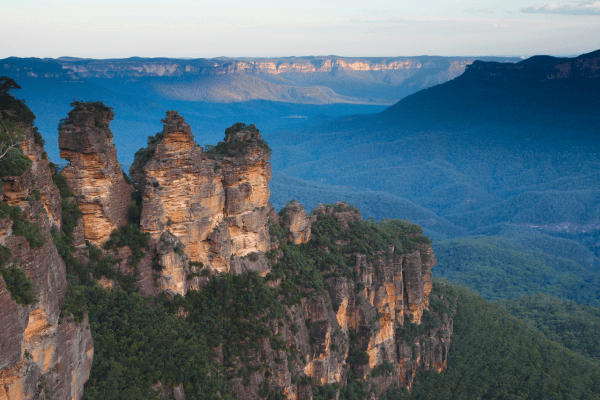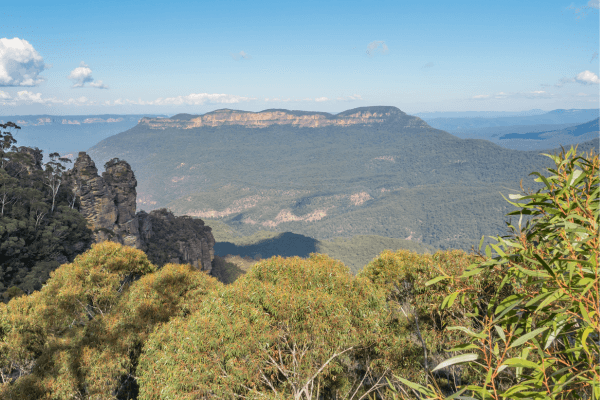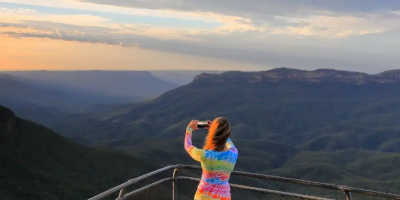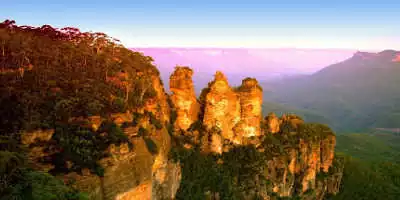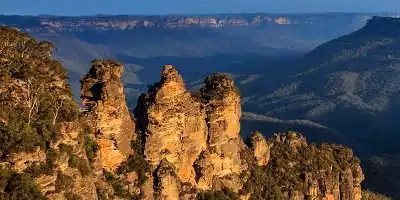
Why are Blue Mountains blue?
Written by: Cameron Ward
Published: 02/16/2019
Reading time: 4 mins
What has made this bushland mountain region appear to be blue from afar?
Nestled only a couple hours away from the bustling city of Sydney, the Blue Mountains is perfect for a day away. This mountain range is just a short drive from Sydney, easily accessible for the perfect day trip. Here, travellers can step into a valley of mesmerizing mountains dense with Australian bushland and natural wonders. The region is one of the dreamiest destinations in all of New South Wales. It is home to both unique wildlife and breathtaking views.
But many people are confused by the name of the region, so where does the name Blue Mountains exactly come from?
The Blue Mountains Formation
Rewind to over a million years ago when the sea completely covered the area of the Blue Mountains. While the sea level was so high, bucket loads of residue dropped into the water and covered the sea floor. All the dust and debris eventually compressed and formed sandstone and shale. Eventually, the water level receded, leaving behind hard rocks.
The flowing water and changing weather started forming the land. Due to the continuous erosion by the water and weather, the rocks slowly moulded into rolling hills. Even further erosion came about after continuous volcanic eruptions caused lava to flow through the cracks of rock.
The area naturally formed spectacular mountains over millions of years. Today, we can appreciate the incredible rock formations, deep canyons, cascading waterfalls, and lush forestland covering the area. All this took about 250 million years to happen.
The Blue Mountains History
Due to its size, there is a rich history in each section of the Blue Mountains. With six separate Aboriginal tribes who hold connections with this land, the area holds a strong significance. The local groups include Darug, Gundungurra, Dharawal, Darkinjung, Wanaruah and Wiradjuri.
European settlers did not venture into the area until 1813. At that time, the land was thick in the impermeable forest. However, soon parts were cut down to make room for open plains for farming and settlement.
The Reason behind the Blue
You may be confused about how this area was given the name “Blue Mountains”. The mountains look a lot more green in colour than blue, with their lush bushlands carpeting the mountains and gorges. However, the name is actually due to the type of bushland inhabiting the mountains. More specifically, we have the eucalyptus tree to thank for the name.
The eucalyptus trees are spread throughout the mountains. They are one of the most common plant types found throughout the Blue Mountains. Also named gum trees, these trees are a prominent species of flora in the Blue Mountains. They are the only food source for the beloved koalas, as well as a home to the native birds. When strolling through the eucalyptus forests, be sure to keep your eyes peeled for a koala nestled in the tree branches.
One of the main factors of the eucalyptus tree is the oil found in the leaves. The leaves are used for a number of benefits for humans. Humans have extracted the oil from eucalyptus leaves for a range of uses. Some uses include helping to dampen coughs, keeping away insects, and aromatherapy.
The scorching sun in New South Wales plays a factor in creating the blue haze. The sun slowly heats up the leaves, ultimately causing the oil to seep out in a mist. This oil mist covers the area, creating a beautiful crisp bush scent within the region. Although the mist cannot be seen up close within the mountaintops, the mist can be seen reflected by the light at a distance. This ends up making the region look like it is engulfed in a blue haze. When looking at the mountains from Sydney in particular, the oil fog covers the entire mountain range. This results in the mountains appearing to be blue from afar.
Related article: What are the Blue Mountains used for?

